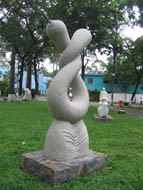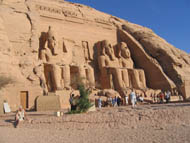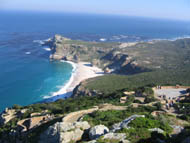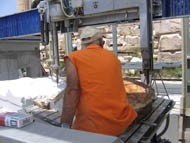Editor’s note: Part 1 of Lane’s trip appeared in the November/December issue. This is the second and concluding part. Have a safe and happy trip.
Thank God I missed the ferry boat going from Dubrovnik, Croatia to Bari, Italy. I got to stay in that beautiful city for 24 hours instead of 2. On the tour of the old, walled city, Emanuel our local guide, told us about the many bombs that were dropped on the old city during the war 15 years ago. He was quick to point out that contractors had rebuilt the place using travertine and limestone from the city’s original quarries. I loved hearing the pride in his voice as he told us about his home town, Dubrovnik: place of ancient habitation as well as today’s traffic jam of lumbering tourist busses.
Here’s a piece of good news: the Parthenon is being rebuilt as you read this. Long a place of fallen columns, stolen marbles, and ages of neglect; this most carefully and beautifully designed building is now undergoing a monumental reconstruction project by today’s industrious Greeks.
I watched automatic stone carving machines slavishly following a computer’s instructions to make any size and shape of replacement parts for whatever pieces can’t be found. The once again rising columns are a perfectly fitting patchwork of old, tan marble and new, white marble. Quite striking, really. Someday when my ashes are nothing more than scattered trace minerals in the world’s oceans, the new/old Parthenon will again be the crowning glory on the Acropolis’ head, as it once was so many centuries ago.
Speaking of crowns, there’s nothing left but a rocky tiara of Mount Thera. We tourists, today, call it Santorini Island. After a 270 km trip on a ferry boat from Athens, I saw that tiara just as the sun was setting and the lights were coming on high up on the rim of the island. What a sight, truly the jewel of the Aegean.
A major eruption in 1450 BC blew Mt. Thera apart, leaving only the high rim of one edge. That remaining edge, a thousand feet high, is beautiful beyond compare. All the Greek Isle calendars I’ve seen, showing colorful balconies overlooking the sea, are of Santorini. I picked up a handful of small stones from its beaches as mementoes, wrote an alphabetic code on one, and dropped it over the Ferry’s rail as we sailed through the caldera, heading back to Athens. I’m not all together sure why I did it, only that I feel better having done it.
Istanbul is a beautiful city, and I’m not just referring to the beautiful water, the beautiful hills, and the beautiful mosques. I’m so tickled that I, in my own small way, was lucky enough to add a bit to one of the attractions of the place. Okay, okay – I’ll tell you the story.
It all happened on my river boat tour on the Bosporus. It was pretty much routine stuff until we exited the Versailles-like Dolmabahce Palace. When it was completed, in l853, Dolmabahce became the residence of all the remaining Sultans of the Ottoman Empire, when they just walked away from the centuries old (and therefore old fashioned) Topkapi Palace.
On the palace’s marble steps, heading for our bus, we had to step around scaffolding and tents that had been set up for repairing the building’s aging, rococo front. Quickly ducking inside, I began telling the two stone carvers, there, about how I was a stone carver too. They promptly handed me a hammer and a chisel, motioning for me to go right ahead. The piece I worked on was only architectural, but still… I WORKED ON IT. Yes, something I put a chisel to will now be part of the Sultan’s Dolmabahce Palace. Hooray for Turkish serendipity.
Egypt was hot, right up against 100 degrees Fahrenheit hot. What did I think of the pyramids of Giza? They look just like big stacks of giant, stone legos. A questionable use of perfectly good stone if you ask me. It’s a much better show on PBS. Finally giving in and paying my two bucks, I stood in a head dress next to a donkey looking only a little like Lawrence of Arabia; me, not the donkey. Poor little thing; the donkey, not me. I declined to sit on his very low and patient, narrow little back.
Abu Simbel was better. That’s the temple they cut out of the living rock to reassemble it at a 70 meter higher elevation, above the rising waters of Lake Nasser, behind the BIG DAM at Aswan. Abu is stunning, even if you can see every cut they made in the stone. It’s a quarter mile long jigsaw puzzle with pieces 10 feet across.
I also saw the uncompleted obelisk, largest ever not made. It cracked before they could free it from the surrounding granite. I finished up Egypt buying a couple of limestone scarabs and watching two kids hollow out buried-in-the-ground Onyx vases with a clever expanding bit on a flimsy, hand crank thingy. The translucent vase walls were wonderfully thinned, by these teenagers, to an eighth inch thin.
We’re off to Cape Town. After hot Egypt and the even hotter United Arab Emirates with its straight up sun, and blowing sand - winter on the cape was fabulous. The Cape itself is stone to die for. There were miles of dizzyingly sheer cliffs with southern ocean waves bashing against them in post card splendor. And there were protea plants everywhere (that’s right, like in Hawaii). Going along that narrow neck of cliffs, one could almost feel like the mighty, leathered warrior Ranngar riding on the back of a dragon - instead of a freshly showered tourist tooling along in an air conditioned van. They have baboons too. Well, at least they have pictures of baboons. The little buggers themselves were off somewhere else that day, probably doing something altogether baboonish.
We stopped along the way to look at some of the famous stone sculpture from Zimbabwe - at least 3 acres of famous stone sculpture from Zimbabwe. How about hippos trying to make more hippos; convoluted, entangled (I’d swear they were sweating if it weren’t stone), straining human bodies? There were elegant figures 10 feet high and elegant figures 1 inch high, and every size in between. My favorites were the dozens of giraffe carvings. Those giraffes are so sculpturally funny. The best had a quartet of them circling head to neck, 8 feet across.
We’ll leave South Africa from the top of Table Mountain, a really big piece of quartzite visible everywhere from the long and curving city of Cape Town. I watched the sun set from up there, while ravens wheeled overhead like nazguls scouting for hobbits.
A stoner always finds the stone. This was certainly true in Viet Nam, the last country I visited and the last I’ll tell you about, here.
Halong Bay, 90 km west of Hanoi, is full of those lovely to look at islands whose bottoms are often smaller then their tops. We should all be so lucky. These limestone beauties are sprinkled around like fresh cupcakes on a kitchen counter - cupcakes with lots of holes. We went into one of these half hidden holes; hallooing our way through its huge caverns, and being greatly pleased with our western echoes among the far eastern hang downs and stick ups. (With these names, I never have trouble remembering which is which.)
Going in the opposite direction from Hanoi, I took a night train, and then a day bus up to the town of Sa Pa in the Viet Namese highlands. This is Black H’mong country and much cooler then Hanoi. My hotel sat precariously on one edge of a beautiful valley, and Viet Nam’s highest stones made up the dominant far edge.
The mountain called Fan Sai Pan is 3142 meters above the narrow bottoms of those islands in Halong Bay.
Going down into that lush, rice green valley, we tourists saw water buffalo lolling in a river pool with their just visible backs looking pretty much like the granite boulders all around them. Kids jumped gleefully from back to rock, and back again, without any apparent effect on their docile charges. Sitting in the shade for an hour, watching those kids having such fun with their living farm machinery (my own feet in the water), sweetened even more my long established love of stone.
I’ll finish telling you about my world of rocks from Ho Chi Minh City (as Saigon is now called).
Near my hotel I found a park many blocks long. Walking through it, I was intrigued by the 30 foot long dragons “carved” out of living hedges. It wasn’t until I looked in the other direction that I realized I was in a sculpture park. Marble, granite, travertine, figurative, traditional, abstract; it was all there. I wandered for some time enjoying the dozens of wonderful sculptures. Many of these pieces could have been carved by any number of folks from NWSSA. I felt accepted and even welcome in this buzz-word city buried so deeply in the American psyche.
I saw no signs of a political or military enemy in Saigon, but here I believe I had found ample evidence of a global humanity. The fact that the physical and soul searching business of shaping stone is found everywhere, illustrates how much we share with people around the world. What I learned in that sculpture park, and other places I passed though, is really quite simple. In the midst of all the diverse agendas clashing so brutally in the world today, it is now more important than ever to seek out and support that multiplicity of deeply human elements we share with all the people on our beautiful Blue Marble.
beautiful Blue Marble.

